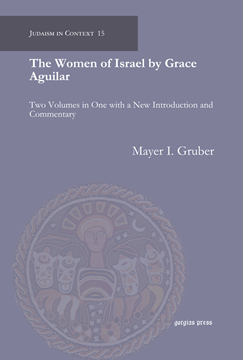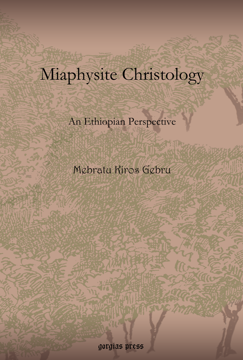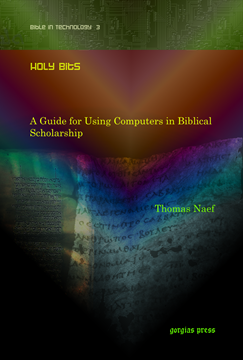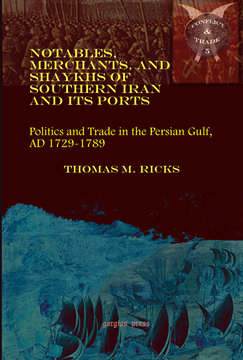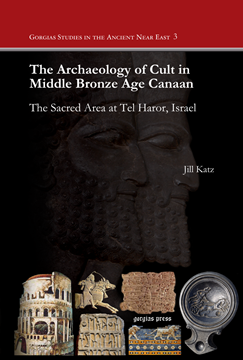The Women of Israel by Grace Aguilar
Two Volumes in One with a New Introduction and Commentary
Series: Judaism in Context 15
ISBN: 978-1-61719-626-3
For almost a century after it was first published in 1845 Grace Aguilar's Women of Israel was presented as a high school graduation gift and even as a Christmas present to employees. More than 150 years before the current proliferation of books on women in biblical narrative and biblical law, Aguilar offered brilliant and innovative interpretations of abiding value. She took for granted that her readers could read Hebrew and that they, like herself, knew the King James Bible from memory. The extensive introduction and notes will make this new edition once again accessible to laypersons, students, and scholars.
$346.00 (USD) $207.60 (USD)
Miaphysite Christology
An Ethiopian Perspective
ISBN: 978-1-60724-528-5
As in the case of the christology of the other non-Chalcedonian Oriental Orthodox Churches, Ethiopian christology is usually nicknamed as monophysite christology - an erroneous christological position which indicates the absorption of the humanity of Christ by its divinity. Disproving such a pejorative designation, this book contends that the christological position of the Ethiopian Orthodox Tewahedo Church should correctly be termed as miaphysite christology, which highlights the one-united nature of the Word of God incarnate. Besides, the book proves the orthodoxy of Ethiopian christology, demonstrating how it is based on the christology of St. Cyril of Alexandria.
$123.00 (USD)
The Demonstrations of Aphrahat, the Persian Sage
By Adam Lehto
Series: Gorgias Eastern Christian Studies 27
ISBN: 978-1-59333-768-1
Among the earliest known sources from the Persian Church, the 4th-century Demonstrations of Aphrahat reflect a form of Christianity much closer to its Jewish roots than contemporary Western forms. Their mix of ascetic instruction, polemic against Judaism, and theological reflection provides an invaluable glimpse into this otherwise poorly documented period.
$228.00 (USD) $136.80 (USD)
Holy Bits
A Guide for Using Computers in Biblical Scholarship
By Thomas Naef
ISBN: 978-1-60724-327-4
This book is an excellent resource for students, scholars, pastors and other people interested in biblical studies for their daily work at the computer. This book treats general interest subjects like hardware and networks, operating systems, word processors and others. The main focus is on subjects for biblical scholars like Unicode, bible software and websites. Each chapter ends up with a list of URLs for further information about the subject. An online up-to-date link list is available. It can be used as textbook as well as a reference work.
$130.00 (USD) $78.00 (USD)
Notables, Merchants, and Shaykhs of Southern Iran and Its Ports
Politics and Trade in the Persian Gulf, AD 1729-1789
Series: Conflict and Trade 5
ISBN: 978-1-59333-957-9
This book investigates the socio-cultural and maritime history of 18th century – early 19th-century Southern Iran and the Persian Gulf in terms of the merchants, mariners and captains who lived and died in the turbulent waters of the western Indian Ocean. This “uncertain frontier” between a revitalized Ottoman Empire to the west and an emergant British India to the east became a testing grounds for the communities of the Gulf. Generally assumed to be a period of anarchy, the 18th-century maritime peoples resolved differences by marriage, forged alliances, and adapted their mercantile skills to the emerging age of global power.
$197.00 (USD) $118.20 (USD)
The Archaeology of Cult in Middle Bronze Age Canaan
The Sacred Area at Tel Haror, Israel
By Jill Katz
Series: Gorgias Studies in the Ancient Near East 3
ISBN: 978-1-59333-791-9
What was Canaanite religion like during the Middle Bronze Age, at the time of the biblical patriarchs? This volume presents a theoretical model for identifying ritual behavior in the archaeological record, providing a test case using the rich material culture and structures that have been unearthed at the biblical city of Gerar (Tel Haror, Israel).
$149.00 (USD) $89.40 (USD)
